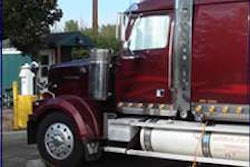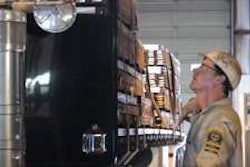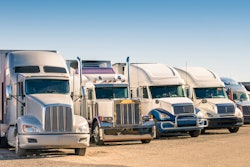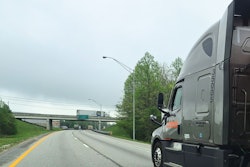After a truck payment, insurance is often the biggest fixed cost for owner-operators, particularly those running under their own authority. When shopping for damage and liability insurance, finding the most coverage at lowest price should be your goal, but minimizing costs is more directly related to how you operate your business.
Whether you’re leased or running under your own authority, there’s plenty you can do to reduce costs when updating existing policies or shopping for new ones.
Optimizing current coverage
Owner-operator Rick Ash, leased to HVH Transportation of Denver, insures via Continental Owner-Operators Ltd. (coolmembers.com), a Billings, Mont.-based association that aggregates risk by offering a large group insurance plan to owner-operators. Many fleet plans are structured in this manner, as are association plans like that of the Owner-Operator Independent Drivers Association (ooida.com). For physical damage and non-trucking-use liability, or bobtail, insurance, Ash pays $283 a month, including occupational accident insurance. “Every year, when my policy renews, they ask me if I’ve had accidents, and if personal info has changed,” he says.
Both could affect liability rates, whether like Ash you’re leased and need only bobtail insurance or you have your authority and need primary or commercial auto liability. If Ash goes a year without any accidents, his insurer sends him a rebate check of $125 to $150.

Updating business information, such as freight, miles driven and area of haul, is crucial to obtaining accurate rates. For instance, “liability will vary depending on whether the operator is in regional or long-haul,” says Wes Brackey, president of Great Plains Casualty (greatplainscasualty.com), writing physical damage and bobtail through its Independent Contractor Services Association. Rates go up with long haul “because they’ll more often find themselves in unfamiliar places,” he explains.
Freight also will impact rates, says Trent Tillman of the True North Insurance (truenorthcompanies.com) agency. “Intermodal carriers will have lower liability premiums – their accidents are small losses, typically,” he says. “They’re driving around town at low speed.” Physical damage premiums, though, likely will be high for most intermodal operators on a percentage of value basis. If a $15,000 truck gets in a fender-bender-type accident “it’s not much difference in the price to replace the bumper than it would be for a $100,000 truck,” he says. The insurance company can charge the $100,000-truck operator a much lower percent of stated value and extract the same premium.
The insurance industry is moving toward more frequent rate updates utilizing GPS technology to track actual mileage, says Paul Brocklebank, chief underwriting officer for Canal Insurance (canalinsurance.com). “Instead of guessing at what the miles driven every year will be, let’s on a quarterly basis validate that and adjust the premium quarterly,” he says. “I think the insured owner-operator benefits.”
The same may apply to physical damage insurance. The stated value percentage on which most insurers base physical damage premiums, says Brackey, is “3 percent to 4 percent on an annual basis.” Unlike the personal auto market, where value estimation updates are fairly automatic for underwriters, updating the stated value of your equipment for physical damage coverage is largely your responsibility.
Bob and Linda Caffee, team expediters leased to FedEx Custom Critical, recently upgraded their power unit from a 2005 model to a 2012 Freightliner Cascadia with a big-bunk sleeper. Their insurance package with Progressive Insurance “went up right around $1,300,” says Linda, but with a new truck, “you adjust your insurance a little bit quicker, the value declines so fast. On our new truck, I’ll adjust it every six months for the first three years” to keep physical damage premiums low.
On how much to reduce the value, Ash says, “I was always told 15 percent of new value every six months for the first 18 months.” The association he buys through sends a yearly reminder to him to adjust his value and, “when they send that letter, I usually go to TruckPaper.com and punch in my truck’s specs and gauge it that way,” he says. If there’s a big difference between sale prices for his truck model and his stated coverage, he tells COOL to drop coverage amounts.
If fair market value of your truck drops below what you owe, consider physical damage “gap” insurance to cover the difference. That coverage is included in Arkansas-based dry bulk carrier Oakley Trucking’s physical damage policy, offered to business owners in its 520-power-unit all-owner-operator fleet. Giving the example of an owner-operator involved in a total loss who owes $80,000 on a truck worth $50,000, Oakley Office Manager Tommy Mitchell says gap insurance would cover the $30,000 spread to assure the lender gets paid in full. Rates in Oakley’s physical damage insurance offering, written by Great American Insurance, run at 3 percent of stated value, while non-trucking liability is a flat $31 monthly.
Shopping for new coverage
Brackey says it’s important to fully understand coverage when comparing policies. That includes knowing your deductible and exclusions, and whether you want to assume more risk by choosing a higher deductible that will reduce your premium.
Independent agents like Roemer Insurance (insuremyrig.com), C.M. Brown & Associates (based in Perryville, Mo.; (573) 547-4508) and True North can give an operator access to dozens of competing insurance carriers, plus the benefit of dealing with a single person on a claim. “We’re the bridge between the insurance carriers and owner-operators,” says Gabe Hotop, with C.M. Brown. Hotop worked with Overdrive 2010 Trucker of the Year Mike Crawford when he transitioned from being leased to Prime Inc. to running under his own authority and dedicated to Prime.
If you’re getting insurance where you’re leased, Tillman notes that volume pricing may dictate good rates for the group policy. Brackey says, however, for operators with good maintenance and driving records, it may make sense to buy an individual liability and damage policy.
“Rates can vary a lot between companies,” says Progressive Commercial Auto Marketing Director Mike Miller (progressivecommercial.com). While Progressive is one of the few insurers that sells direct to operators, Miller also promotes independent agents. The company works “closely with a sub-segment of agents who specialize in serving the needs of owner-operators. If an owner-operator chooses to purchase insurance from Progressive through an agent or directly from the company, he or she will receive the same quoted rate.”
1st Guard Insurance Company (1stguard.com), however, believes its direct-write model for physical damage insurance benefits owner-operators “because we are not paying agents the normal 15 to 25 percent commission,” says Wilson. “We do not work through agents/brokers.”
Wake-up call for new independents
One of the biggest changes for an owner-operator transitioning from a leased operation to running under his own authority is insurance costs. Operator Mike Crawford found this out last year. Leased to Prime, he’d bought into the company’s group policy for bobtail insurance and paid $32 a month, he says. Physical damage insurance on his 1994 Freightliner, bought through the Owner-Operator Independent Drivers Association’s insurance program, ran him around $65 a month. The total $1,154 he paid yearly for those coverages is a small fraction of the $5,600-plus he now pays for liability and damage with his own authority.
The big difference is in the typical $1 million worth of liability coverage. “Where non-trucking liability will run $400 to $500 a year” in premiums, says Gabe Hotop, with independent insurance agent C.M. Brown & Associates,“ primary liability will be $4,000 to $5,000 a year.” Canal Insurance’s Paul Brocklebank says, “Our single power-unit range is between $4,000 and $7,000 for preferred to standard risk.”
It’s a cost more operators may face if more carriers shift from leasing owner-operators to working instead with subcontracted owner-operators who have their own authority. Rudolph Freight Systems of Murray, Ky., formerly a dry freight motor carrier, now operates under a Freight Forwarder DOT authority and contracts with independents. Company founder Robbie Rudolph says his approximately 100 independents work “with an agreement with us to be dedicated carriage.”
They also handle all their own primary liability insurance. Rudolph says the company has been able to arrange a settlement deduction program via True North Insurance, in this case with a policy written for each individual operator rather than as a group. “A one-truck operator really wants to run and make money,” says Rudolph. “We want to take safety and insurance concerns off of him as much as we can. We’re the intermediary hooking him up with” insurers and safety consultants.
Participating in the settlement deduction program for dedicated operators avoids the need for a 15 percent to 25 percent down payment on yearly liability premiums, says Rudolph. The company pays its providers weekly and deducts insurance costs weekly.
More Insurance Tips
• Mind the deductible. You can raise your policy’s deductible to lower the premium, but independents should beware, warns Mike Lawrence with agency Roemer Insurance. “I always tell my clients to take the lowest deductible that you can afford. If you have a $2,500 deductible on the tractor and the trailer and cargo insurance, and it all comes into play in a loss, $7,500 adds up fast.” If you’re leasing to a carrier, read the lease carefully. Some will hold the operator responsible for a certain amount of carrier liability or cargo deductibles in a loss. For instance, says owner-operator Rick Ash about his carrier, “If they deem me responsible for freight damage due to negligence, it is written into my lease that they can hold me responsible for the first $1,500 of the claim.”
• KEEP CREDIT HISTORY CLEAN. Credit reports are often pulled by underwriters to determine owner-operator insurance rates. Pay your bills on time and follow other practices to maintain a high credit score.
• INCLUDE AFTERMARKET ITEMS IN STATED VALUE. When you determine fair market value during policy updates, use online and dealer resources to help determine aftermarket add-ons’ real effect on your rig’s resale value. “You’re trying to hit the maximum amount the insurance company will give you in a total loss,” says Jeff Clark, leased to America’s Service Line. Items like deer catchers and anti-theft devices, notes 1st Guard Insurance’s Courtney Wilson, can bring rate discounts, too.
• ACCOUNT FOR SAFETY. Don’t be shy about communicating a strong safety record during any rate quote or policy update, says Wilson.
• WORK ON RELATIONSHIPS.While it may be tempting to shop for the best rate every year, longevity with an insurer may pay off, says Canal Insurance’s Paul Brocklebank.
The company’s “until-canceled” policy is automatically renewed yearly, and offers discounts for operators. “Our insureds tend to do best with us when they stay with us for a long time,” he says.
Leased owner-operator averages
3.7% of stated value for physical damage premiums*
$420 yearly for non-trucking liability*
$6,000 yearly for primary liability**
* From True North Insurance’s settlement-deduction programs set up with motor carriers leasing owner-operators nationwide
** Overdrive’s 2011-12 Partners in Business manual












